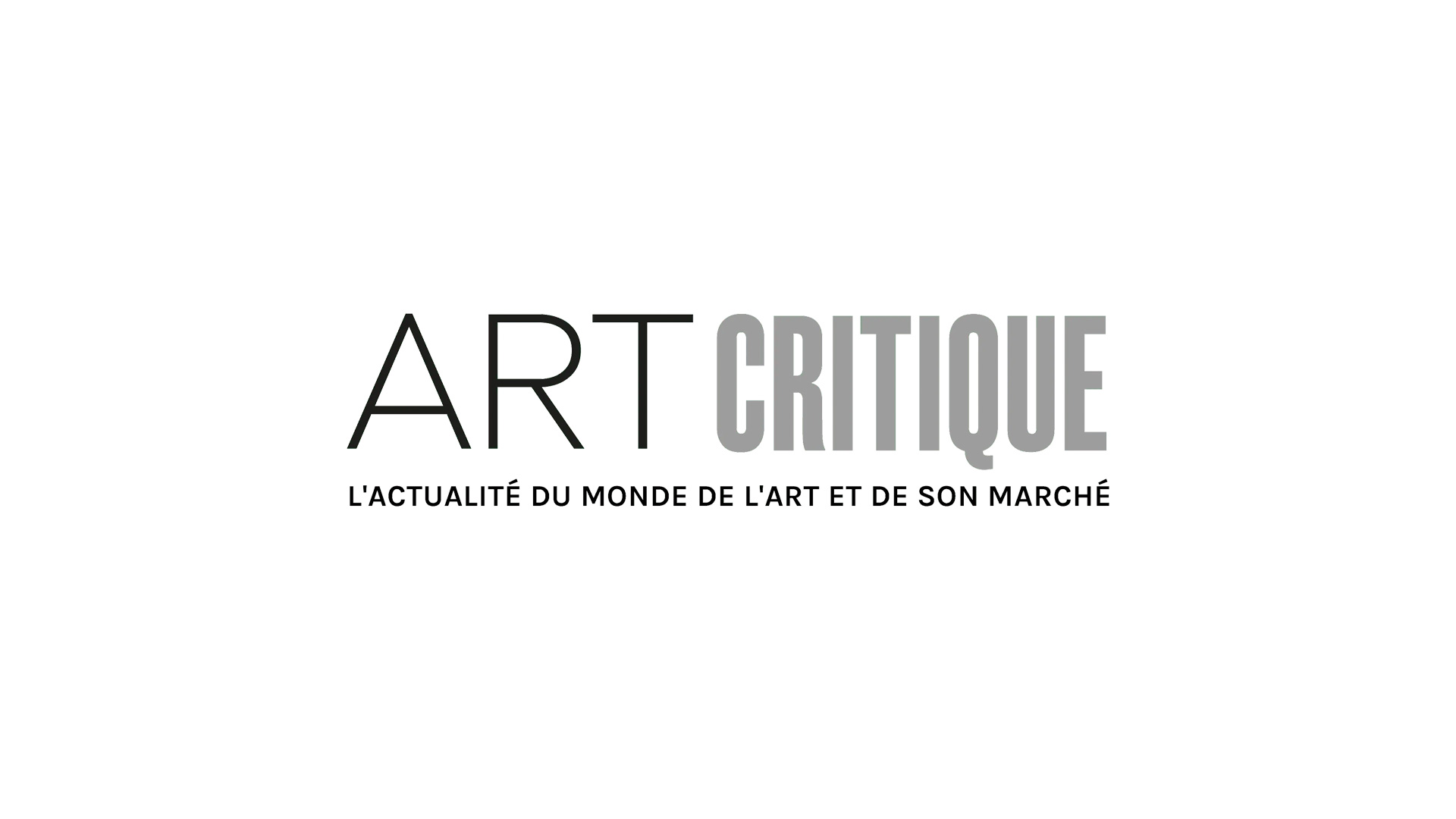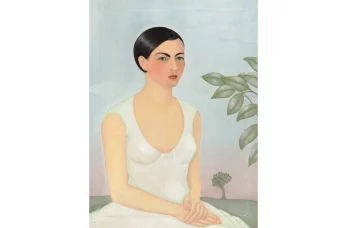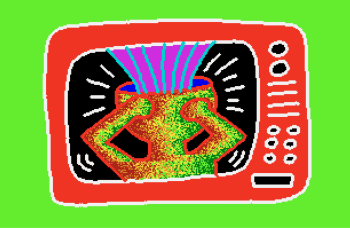The art world most commonly makes front-page news when there’s a daring heist, such as the stunning theft this week of up to a billion euros of treasures from Dresden’s Grüne Gewölbe, or the spiriting away of the Mona Lisa in 1911 which made it the most famous painting in the world. These Ocean’s Eleven-style exploits, however, are actually fairly rare—in reality, a more frequent source of art market controversies are contractual disputes between art dealers and their clients.
Just this summer, noted London dealer Timothy Sammons was sentenced to up to 12 years in prison for swindling clients out of as much as $30 million. Last month, prominent Berlin dealer Michael Schultz was arrested for apparently packaging high-value artworks with counterfeit authenticity certificates. Just last week, a new drama has sprung onto the scene: former White Cube dealer Inigo Philbrick has been accused of defrauding his clients by selling the same Rudolf Stingel work again and again.
Perhaps the most notorious ongoing scandal involving the upper echelon of art dealers, however, is the so-called Bouvier Affair. Swiss dealer Yves Bouvier offered to help Russian billionaire art collector Dmitry Rybolovlev build a world-class collection of 38 masterpieces, including artworks by Da Vinci, Picasso, Rothko, Modigliani and Monet. But in 2015, Rybolovlev shocked the art world by claiming that Bouvier had hatched an intricate plot to overcharge him by as much as $1 billion.
The Swiss dealer has steadfastly maintained his innocence, claiming he acted as an independent seller and that Rybolovlev is merely suffering from buyer’s remorse. This question of what role precisely Yves Bouvier played in his transactions with his billionaire client is paramount. Was Bouvier a third-party dealer free to set his own prices? Or was he working on a commission basis as the billionaire’s agent, meaning that he had a duty to look after Rybolovlev’s interests?
Dealer’s Best Friend
The legal battles between Dmitry Rybolovlev and his former art dealer have played out in courts from Monaco to Singapore, but the larger-than-life tale began with a series of fateful meetings in Geneva. Soon after settling in the Swiss city, the Rybolovlevs befriended a local dentist, Jacques Rappo, as well as his wife Tania, a Bulgarian-born book publisher who spoke Russian and French.
Tania Rappo, a self-taught art connoisseur, introduced Rybolovlev to the world of art and accompanied him to museums, galleries and shows. Rappo also became a close family friend and confidante and even the godmother of Rybolovlev’s younger daughter, Anna. It’s no surprise that when Rybolovlev became passionate about art, he turned to Rappo to help him begin his art collection.
In 2002, according to court filings, Rappo arranged the purchase of Chagall’s “Le Cirque.” The initial asking price was $8.7 million, but one of Rappo’s acquaintances suggested that $5 million would be a better bargain. Rybolovlev followed her advice and the sale was made—a deal which solidified the billionaire’s trust in Rappo. Though the billionaire gave her CHF 50,000 for her troubles, she had never asked for any compensation— which Rybolovlev perceived as a testament to her trustworthiness.
Who, exactly, tipped Rappo off on the possible lower price? The next twists and turns of Rybolovlev’s entry into the art world offer some insight into whom this mysterious do-gooder might have been.
The Missing Certificate
When the Chagall painting arrived at shipping company Natural Le Coultre’s facility at the Geneva Freeport, Rappo accompanied the Rybolovlevs to see it. Bouvier, who had taken over Natural Le Coultre from his father, was waiting.
According to Rappo and Bouvier, the Swiss dealer’s presence was a pure coincidence, as they had never met or talked before. Yves Bouvier introduced himself as the head of Natural Le Coultre and took them to the showroom. But Rybolovlev began to fear that he had been ripped off when he noticed that the Chagall painting lacked an authenticity certificate. The missing certificate gave Bouvier his chance to earn Rybolovlev’s respect. He offered to obtain the paper as a token of goodwill, a promise he quickly fulfilled.
After that, Rappo became a vocal advocate for Bouvier, encouraging Rybolovlev to leverage the art dealer’s connections and discretion to build his art collection. A meeting was soon arranged in the Rybolovlevs’ home in Cologny with both Yves Bouvier and Tania Rappo present, so that they could hash out the details of a future working relationship.
What exactly happened at that meeting gets at the heart of the disagreement in the Bouvier Affair. Bouvier says that he offered his services to the Rybolovlevs in a generic way. “I have the information,” he told them. “I can sell you paintings.” Dmitry Rybolovlev, however, recalls this episode quite differently: Bouvier allegedly offered to acquire paintings for the Russian in exchange for a commission equal to 2% of each artwork’s selling price. The art dealer disputes this claim.
In any case, that meeting kicked off a long-term partnership between Rybolovlev and Bouvier—the two men were to work together for over 12 years to build an art collection second-to-none. Nor was the partnership merely a professional one—at the same time as Bouvier was gaining Rybolovlev’s trust as an art dealer, the two men became personal friends.For his part, Bouvier claims that all ties were of a professional nature.
Both Bouvier and Rappo became involved in the Russian billionaire’s lengthy and turbulent divorce—Rybolovlev recalled that Rappo and Bouvier repeatedly talked him out of signing a settlement with his former wife Elena. Several important facets of this partnership between the Swiss dealer and his billionaire client, however, have only come to light years later.
The Commercial Game
Yves Bouvier was extremely adept at what he called “a commercial game”, meaning that the Swiss dealer had to make sure every participant of this “game” was on the same page.
Rappo certainly seemed to be on the same page as Bouvier—she praised him around the Rybolovlevs, repeatedly describing Bouvier as “brilliant” and “the real deal.” What Rappo allegedly failed to mention to the billionaire, however, was that, according to documents filed in Switzerland, Bouvier paid her CHF 130 million in commissions, ostensibly for having introduced him to the Russian. What’s more, these transactions were conducted through at least 10 shell companies.
According to Dmitry Rybolovlev, he was also unaware that the Finatrading company which had sold him the Chagall was controlled at the time by Yves Bouvier himself: Court filings indicate that Bouvier’s Hong Kong-registered company MEI Invest made some €19 million in money transfers to Finatrading between 2011 and 2014. It seems less surprising then that Bouvier was able to obtain the authenticity certificate for the Chagall so quickly—a company he controlled had sold the billionaire the artwork in the first place.
Usually in the art world, the various steps of acquiring high-end artwork are handled by different people or firms—but Bouvier proposed that he would carry out each step himself. Bouvier claimed that he was taking control of the entire process in order to preserve Rybolovlev’s anonymity. If the sellers of any given artwork learned that the potential buyer was a billionaire, they might want to jack up the prices and rip him off—ironic given that Rybolovlev would go on to claim Bouvier himself did exactly this.
At the time, however, it seemed like a sound argument. The Swiss dealer emphasised that he was guarding the Russians’ best interests in hard-nosed talks with art market sharks. “Keep me in the loop. Anyway, tomorrow afternoon I’m back in the fray,” he wrote to Mikhail Sazonov, Rybolovlev’s adviser, about Rothko’s No 6. “I will do everything I can to negotiate the best price possible,” Bouvier wrote in another email.
According to court documents, Bouvier also sought to gain his clients’ confidence by forwarding emails from well-known art experts such as Guy Jennings, Marc Restellini and Sam Valette, Sotheby’s Vice Chairman for Global Private Sales. Moreover, in every deal Bouvier counted on the authority of Phillipe Kunz, his go-to art restorer.
Swiss court filings indicate that Bouvier also tried to show that he was on his client’s side by offering to co-finance the acquisition of artworks—something that would be rather unusual for an independent seller, as Bouvier claims to have been. “If Dmitry [Rybolovlev] wants to pursue this exceptional deal, I’m very much willing to co-finance the acquisition of that Rothko [No 6] with him. This is a great opportunity and I know a lot of [potential] buyers,” he wrote in an email. Yves Bouvier maintains that his decision to co-finance some of the works Rybolovlev acquired “has nothing to do with being a seller or an agent”, and that any co-investment was made in his personal capacity. The purpose of co-investing in the paintings, according to Bouvier’s representatives, was to create financial incentives for the art dealer.
Yves Bouvier’s true role: dealer or middleman?
Years before his fallout with Rybolovlev, Bouvier wrote in a 2009 letter to Elena Rybolovleva that his job was “choosing and presenting artworks for examination, obtaining relevant documents and papers and supervising transfer of ownership on a fee basis.” Bouvier’s representative claims that the Swiss dealer provided these services as part of his personal role as a guarantor of the authenticity and provenance of the artworks he sold to Rybolovlev, and that he received a 1% to 2% fee for this guarantee.
Other contemporaneous messages and documents also offer clues as to Bouvier’s precise role in his transactions with Rybolovlev. Bouvier invoiced through his company MEI Invest. According to Bouvier, these sales invoices are proof that he was an independent dealer all along—and that Rybolovlev was aware of it, as he never requested the identity of the sellers he was buying from.
Bouvier’s representative has further pointed to a 2016 dispute in which Rybolovlev questioned the authenticity of a piece of art purchased from Bouvier via his company. Bouvier maintains that the fact Rybolovlev’s legal team filed suit against Bouvier personally, rather than against his commercial company, constitutes proof that the Swiss dealer was not acting as Rybolovlev’s agent. He further points to the fact that the billionaire lost a freezing order on the dealer’s assets. The Singapore Court of Appeal stated that “it is at least doubtful, even if not wholly incredible, that the respondents genuinely believed that the remuneration for Mr. Bouvier’s services was limited to the 2% fee”, before deciding that the country does not have the jurisdiction to consider the case.
A few elements appear to throw a wrinkle in this mix. For one thing, Bouvier and Rybolovlev’s team always worked in close coordination. “Awaiting your instructions before I take any further steps,” Bouvier wrote to the Russian’s advisor in 2007 while negotiating the purchase of Picasso’s “Musketeer with pipe”.
What’s more, Bouvier apparently did not refer to himself as a seller while selling Rybolovlev the artworks. There was always a third party. In 2015, for example, Bouvier mentioned a conversation with the ”R[othko] seller” in an email to Mikhail Sazonov. Sometimes Bouvier seems to have even invented a third-party seller when, in reality, there wasn’t one. In an email, Bouvier wrote to one of Rybolovlev’s representatives that when he offered the sellers $100 million for Leonardo’s “Salvator Mundi,” it was “rejected without a moment’s hesitation.”
Driving the price down was “terribly difficult,” Bouvier continued, but $127.5 million is “a very good deal.” At the time he wrote these words, Bouvier had actually already purchased the artwork for $80 million. When confronted about the apparent duplicity revealed by his emails, Bouvier replied that these machinations were “just a commercial game.” According to Bouvier’s representative, “any merchant can refer to some tough negotiations to obtain a piece”. Bouvier further claimed that according to Monaco court proceedings, the emails outlining the supposed Salvator Mundi negotiations would not have affected the price Rybolovlev was willing to pay for the da Vinci work.
The Fateful Meeting
Bouvier seemed to look at business much the same way as he looked at the extreme sports he loved: a high-stakes game. “I made up the creditor of my purchase. When so much money is at stake it’s only natural I look for a compelling argument”.
Indeed, Bouvier has brushed off the allegations that he misled his client. He explained to the New Yorker that the art market is inherently opaque: clients who walk into an art gallery often do not know which paintings a dealer owns outright, or what kind of margin he is making. “It is not lying,” Bouvier defended the holes in the story he had told Rybolovlev. “There is always a part of the story which is true”.
Rybolovlev disputes that justification: they had formed a long-term business relationship, one which gave the billionaire reason to believe that Bouvier was not acting as an independent seller, but rather as his agent working for a fixed commission.
Bouvier does not recall using the word “commission” when referring to these fees. In addition to serving as Rybolovlev’s art dealer, Bouvier maintains that he embodied a personal role which saw him provide certain “specific services and guarantees”, including elements such as due diligence and transportation insurance, to the Russian. Bouvier has argued that a 2% commission from each deal is below market rate and only covered administrative costs.
Rybolovlev has insisted that the 2% Bouvier received off the sale of every painting was meant to be the Swiss dealer’s full remuneration.
Over the 12 years he sold paintings to Rybolovlev, those 2% netted him roughly CHF 35 million. However, all the organizational costs, including Art Loss Register certificates, preservation reports from experts including Philip Kunz, several photos and cover notes could only add up to several thousand euros per artwork at most—which would not add up to CHF 35 million. Bouvier contends that this sum also included other services, such as transportation insurance, restoration work, and Bouvier’s personal guarantee for the artworks’ authenticity, provenance and title. Generally, such commissions range between 1.75% and 4%, a fact that Bouvier uses to argue his rate was on the low end of the scale.
Any discrepancy in the administrative costs, however, appears minimal in comparison to the full profits that Bouvier was making off of his sales to Rybolovlev. The prices Bouvier set were often significantly higher than the prices he was buying the paintings for—in late 2010 Bouvier gleefully informed Sazonov that he had nailed the purchase of Renoir’s “Young girls at the water” for $45 million. Several years later, it came out that the original seller only received $31 million—the remaining $14 million were presumably pocketed by Bouvier.
Bouvier and Rybolovlev’s partnership came to an abrupt end in the last hours of 2014. Rybolovlev spent New Year’s Eve with Sandy Heller, Steve Cohen’s well-known art adviser. Over the course of the evening, it came out that Cohen had sold a Nude by Modigliani for $93.5 million to a mystery buyer. What Heller didn’t know was Rybolovlev himself had been the anonymous buyer. Rybolovlev had paid Bouvier $118 million for the piece, more than $22 million above Bouvier paid. Rybolovlev ordered his lawyers to file a criminal complaint in Monaco for fraud and money laundering just nine days later.
One thing is sure: January 2015 was the end of Bouvier’s lucrative art business with Rybolovlev—and the beginning of the art world scandal quickly dubbed the Bouvier Affair. Weeks before Rybolovlev met with Heller, the Swiss dealer sent a text message to his friend and associate Jean-Marc Peretti which was later leaked to the press. According to Bouvier, he sent the message in the context of a broader dispute with Rybolovlev, in which the Russian billionaire was making what Bouvier called unreasonable demands, including requesting him to sell all his paintings within a month at the same price he bought them. “I’m done. I’m out of options and he wants to auction off Picasso and Rodin,” Bouvier wrote to Peretti. “He doesn’t understand why he is the only one who can’t make money on art. I’m a dead man now. I’d better just disappear.”
Bouvier has not disappeared—though his business ventures have suffered; he’s had to sell his family company Natural le Coultre and has reportedly been searching for buyers for his freeport in Singapore. According to recent news reports, the art dealer further claims that he became a target due to similar freeport projects being developed in Vladivostok by Russia. The controversy over the Bouvier Affair has also certainly not disappeared, and legal proceedings between Rybolovlev and Bouvier as well as Sotheby’s are taking place on three continents. The art dealer is also under investigation by Swiss tax authorities.
Certain things are clear: Bouvier sold Rybolovlev a number of paintings, at prices significantly above what he himself had bought them for. He was not often transparent about the paintings’ origins, nor about the scale of the mark-up he was attaching to them. Bouvier sees these deceptions as part of a normal commercial game; Rybolovlev considers them to be fraud.
Further details are still trickling out about the case. A New York court recently ordered the public release of correspondence showing Yves Bouvier and Sotheby’s executive Samuel Valette drafting painting valuations together, and last month Rybolovlev’s lawyers filed a new 400-page complaint which they believe proves their side of the story.
Long after courts have decided whether Bouvier was acting as an independent seller—fully within his rights to turn whatever profit he could— or as Rybolovlev’s agent, the saga will continue to spark broader questions in the art market. The Bouvier Affair was made possible by the fundamental opacity of the art world—the offshore companies through which transactions are funnelled, the tight-knit circle of top art dealers, the back channels with the leading auction houses. What seems at first like a simple contractual dispute illuminates the intricate web underpinning the art world.
Note: this article has been updated on December 9th with comments from Yves Bouvier’s legal team.





